Local reporter, Jo Chipchase, explains how a small and depopulating village turned itself into a top tourist attractrion, and is ideal for a ghostly autumn visit…
THE white village of Soportújar, in Granada region, is famed for becoming the Alpujarra’s de facto ‘theme park’ based around ‘brujas’ (witches). You might think you’ve entered a mini-Disneyland. An amusement park for family and friends. Rather than being a historical feature, the town’s success is a result of sustained enterprise and effort.
The spooky theme has proved so popular that the number of attractions, businesses, and visitors in the village are growing annually. ‘Soportújar’ ranks as the area’s top search term on Google.
Furthermore, the village has much to offer visitors in autumn. For one thing, there are reportedly fewer crowds now than during August. It’s the perfect place to take the kids around Halloween, especially as there’s a Night of Witches on November 2.
An invented theme
Although it may not be obvious to visitors, a buzzing ‘bruja’ village didn’t always exist in the heart of La Alpujarra. Just as the spa town of Lanjarón invented its fiesta of water and ham, to coincide with the saint’s day of San Juan (24 June), Soportújar’s witch theme was created by young town councillors in 2006. They wanted to encourage tourism, starting with a witch cave and fountain. They probably didn’t imagine the idea flying ahead like the proverbial witch on her broomstick!
The current councillor for culture, Jesus Martin, says: “Soportújar continues to be the most sought-after destination in La Alpujarra. It also enters the top three of the most sought-after destinations to spend the night in Andalucia. And the second most searched town on the internet in Andalucia.”
That is no mean feat for a village that had entered into steady population decline – perhaps someone cast a spell?
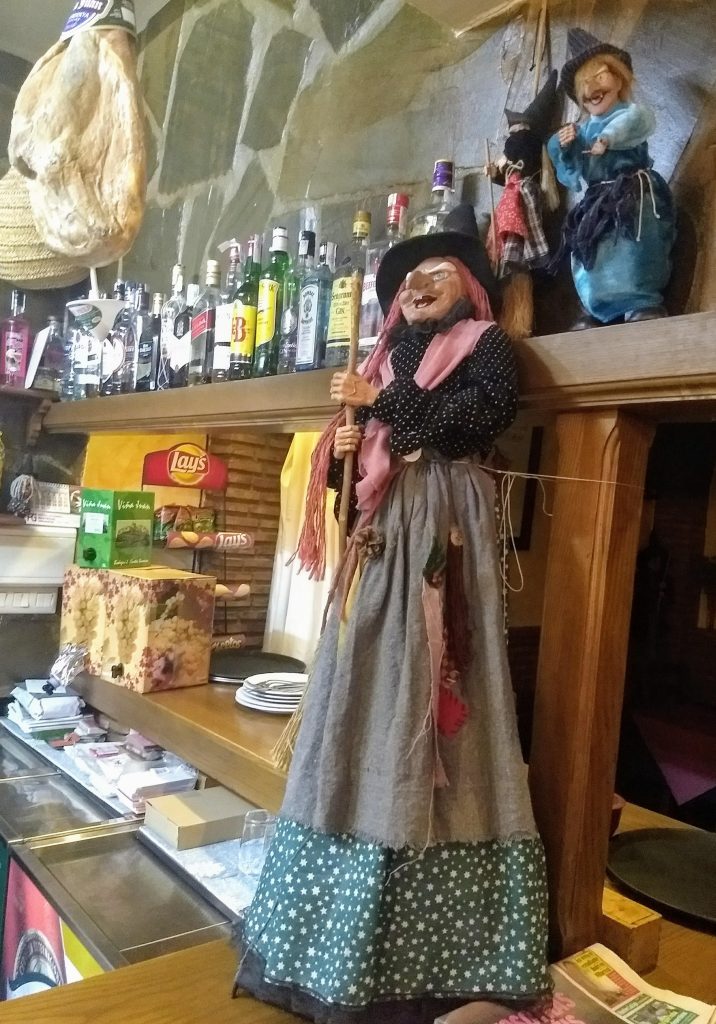
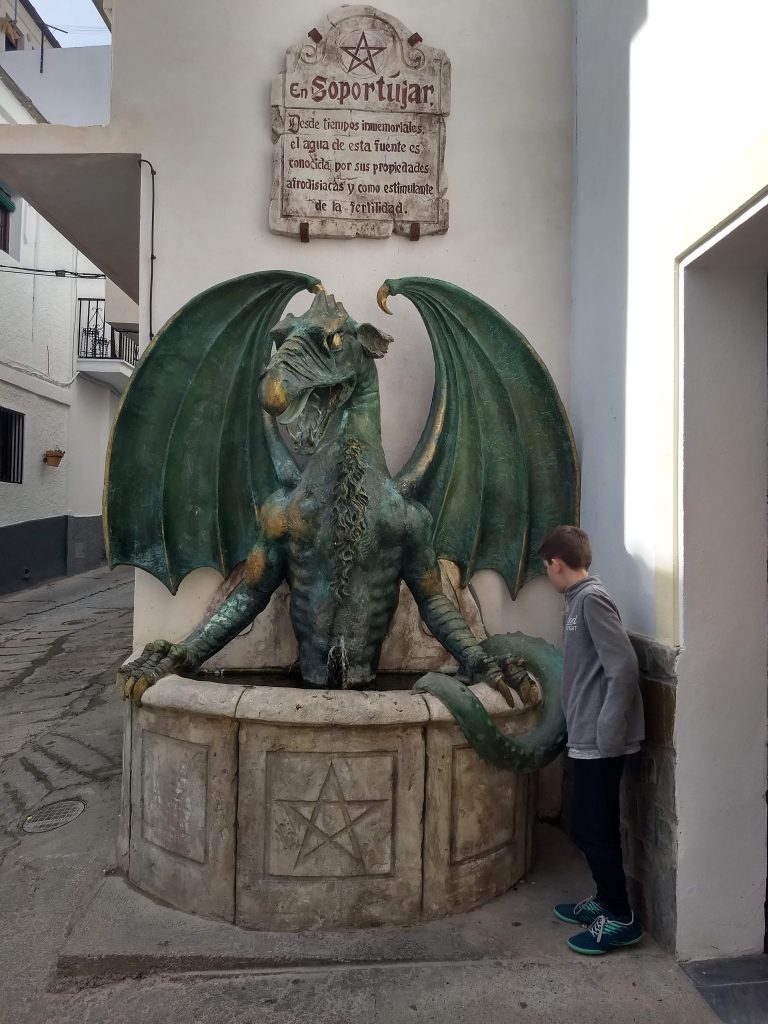
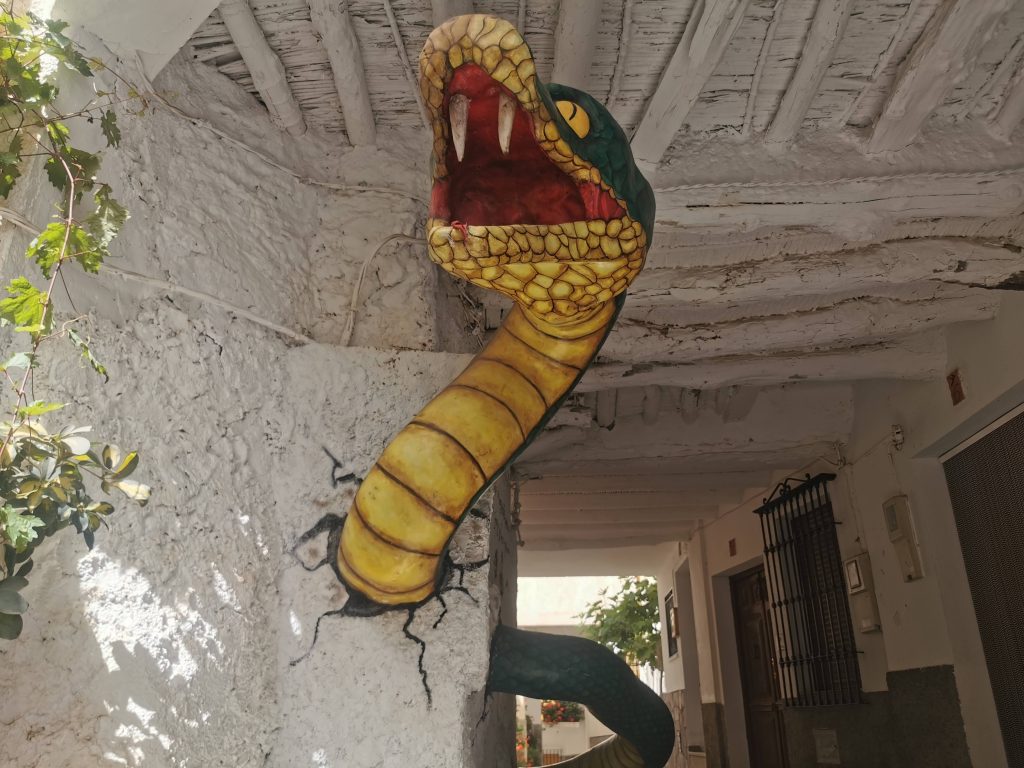
Making history work
The name ‘Soportújar’ means ‘place of arcades’ and refers to the overhanging passages – ‘tinaos’ – of La Alpujarra. The town also has the narrowest passageway in Spain, which is clearly marked for tourists.
As for witches, there is a valid historical reference. During the 16th century, after the expulsion of the Moors, King Felipe II repopulated the village with families from the north of Spain – Asturias and Galicia. According to legend, these people brought their pagan customs, held witches’ meetings, and were branded ‘sorcerers’.
On top of that, witchy business has become popular throughout La Alpujarra. For example, Lanjarón and Capileira both introduced ‘brujas’ to their cultural events. For Soportújar, the small, historical mention has been maximised, at a time when witches are a local trend.
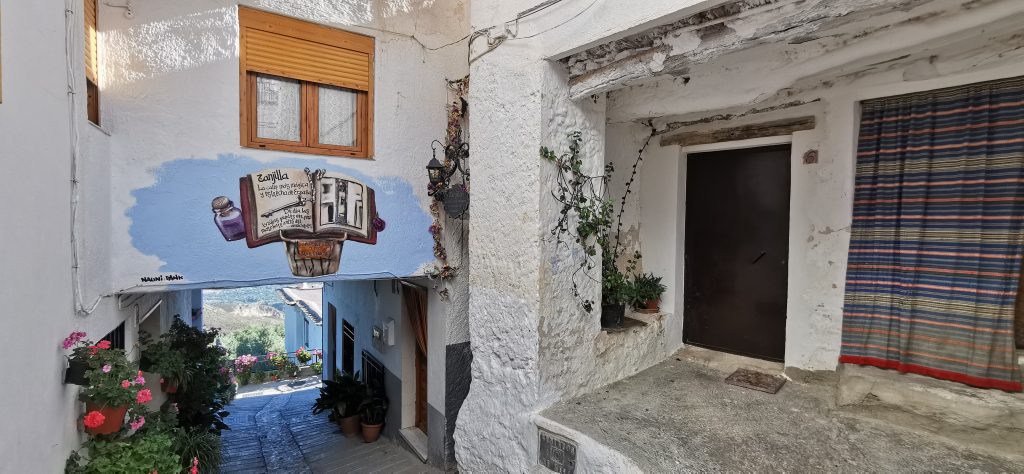
Linking with town fiestas
The spooky theme was popularised by Soportújar launching the ‘Feria del Embrujo’ (bewitching fair) in 2009. Celebrated on 11 August, it can attract up to 20,000 visitors, with the streets full of onlookers. Even a “quiet” year brings 10,000-15,000 people.
The ‘feria’ in August 2024 saw a large youth party (‘botellon’) above the town, on the ‘era’, while older residents danced to music in the plaza.
The town also has events for Halloween – most notably the ‘Night of Witches’ (Noche de Brujas) on 2 November. Jesus Martin says he expects it to attract 4,000 people.
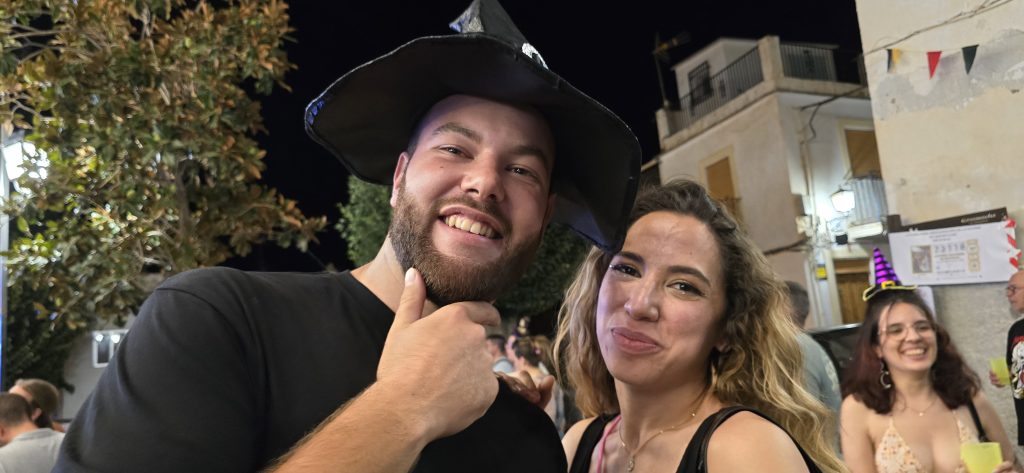
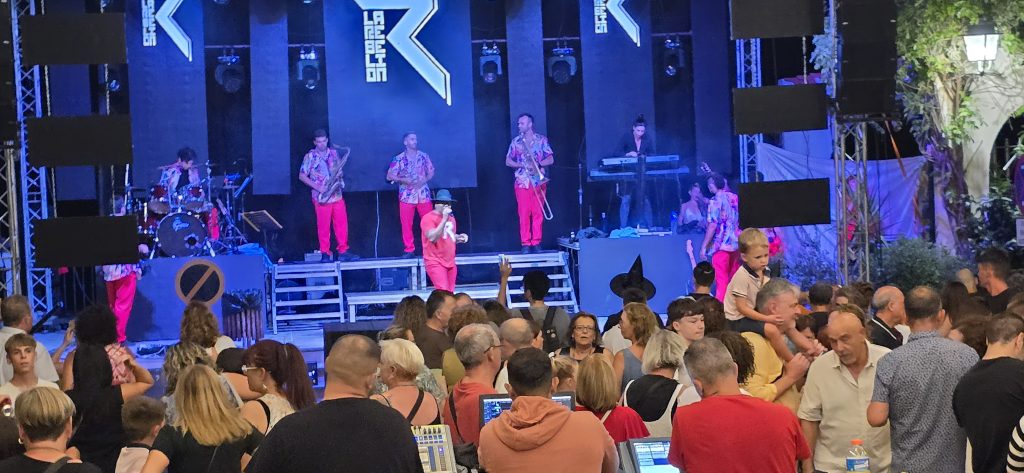
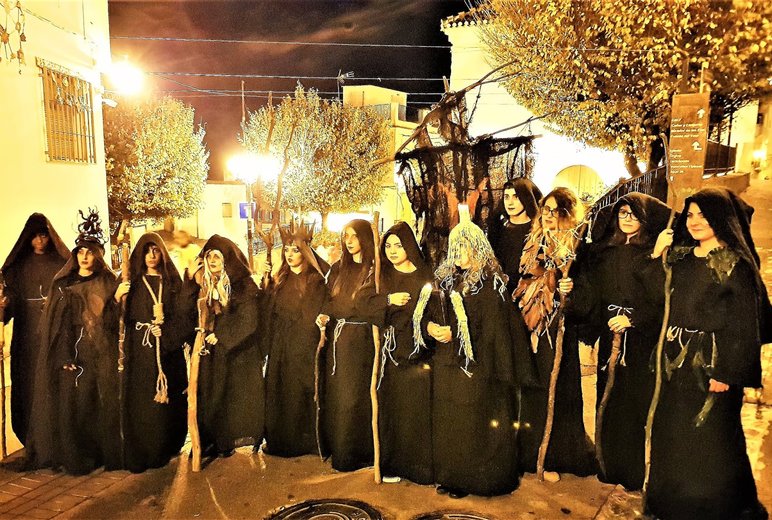
Constant visitor influx
Constantly, even in winter, visitors arrive to the village. Most of the tourists are Spanish. Some aren’t drawn by spooky elements: they’re hiking along the ancient GR7 trail, which runs through Spain, Andorra, and France. One stretch is from nearby Cáñar to Soportújar, and then Soportújar and Pitres. The village is a logical stop-off point, with its hospitality and restaurants.
Says Jesus: “Weekly visitors are approximately between 4,000-6,000 from August to April. From May to July, there is less tourism, perhaps with 500-1,000 weekly visits.”
This is a significant influx for a village with 385 inhabitants, and a shows the success of the concept all year round.
A growing industry
Encouraged by its success, Soportújar introduced more attractions over the years, including the Baba Yaga house perched on large chicken legs, a serpent emerging from a wall, a Hansel & Gretel house, a dragon fountain with water coming out of its appendage, and a large effigy of Baba Yagá, as well as decorated walkways for tourists. There is also an “interpretation centre” to understand the theme. Really, you’ll find something around every corner.
The town is widely publicised by press reports, TV programmes and social media (especially YouTube), increasing traction and visitors.
Jesus says: “We’ve expanded from having three businesses in 2017 to 36 in 2024.”
The increase in tourism has seen new souvenir shops and restaurants open, as well as guided tours. On the downside, it has made it increasingly difficult to park.
New infrastructure coming
At peak times, bars and restaurants in Soportújar are very busy. Advance bookings are advisable if you want to dine. If you’re stuck circulating in your car, the ‘era’ above the village is the easiest and least restricted spot.
Soportújar, and the bustling white villages of Pampaneira, Bubion and Capileira, further up the road, tend to increase traffic in the whole zone. This can happen even around Órgiva – a 20 minute drive away.
However, plans are afoot. Says Jesus: “Work will begin on the public parking in the municipal pool area, the construction of new access streets to these new parking lots, improvements to the access road to the municipality, creating two cantilever walkways to prevent the people walking along the road.”
And there’s further development in the town, which has already received around 1.7 euros in infrastructure funding. Says Jesus: “There will be the creation of two large sculptures – Rapunzel’s tower, 15 meters high with a viewpoint at the top, and the Witcher’s cave. These developments are expected for 2025.”
What do the locals think?
The witchy initiatives have encouraged more than 30 new people to live in Soportújar, combating an ageing population. This spell has successfully halted the depopulation trend, avoided the school closing, and has pumped money into the local economy (as well as the village landing a large tranche of the El Gordo 2023 Christmas lottery!). Residents can enjoy a swimming pool and a gym, thanks to the funds.
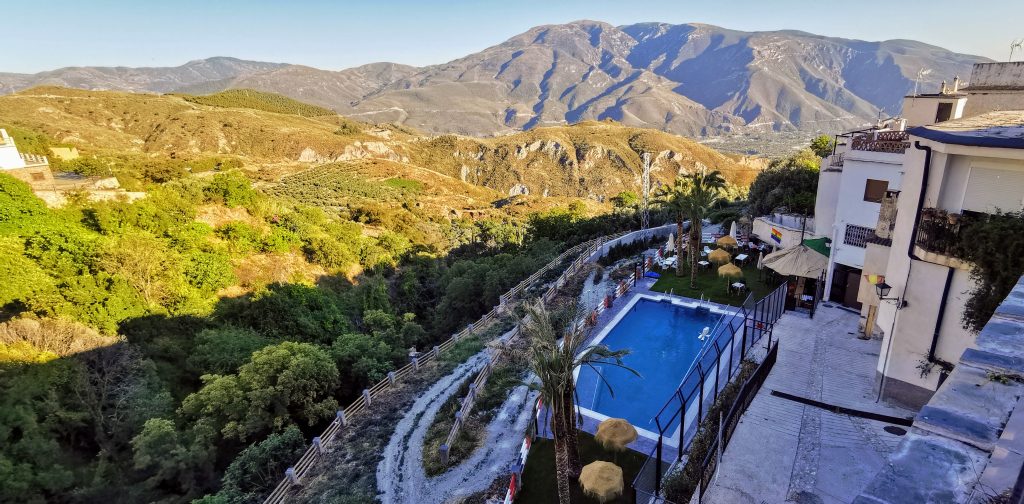
But does everyone like it? We set out to ask people their views…
“There are residents who would rather have a quiet life and easily order a café or beer in the bar,” some old men sitting near the Baba Yaga effigy told the reporter. “However, in general, we think it’s good for the town.” Some old ladies agreed: “The tourism is good for the town. When it’s busy, we just go home so that other people can come here.”
British resident, Siggy, who lives beside Soportújar, is pragmatic. She says: “When the tourist craze started, we weren’t happy. Cars on our track, people using it as a toilet. Roads busy. The mayor understood and now there are many car parks. The village is no longer quiet during the weekends, but it is calm during the week. The issue was that people needed something to keep it alive as the population was dwindling fast. Now the school has children, there are younger workers to do manual work, and around seven bars instead of three. All employ waiters and cooks, etc. If our choice was living next to an abandoned village or ‘Soportulandia’ -as we call it – I will settle for Soportulandia!”
Even outside the village, benefits occur. Holiday rental owners in other towns report adding “near Soportújar” to listings to gain traction.
Says Angel Garcia, proprietor of Camping Orgiva, a 25 min drive away: “For us, Soportújar and the white villages bring many tourists to the area, which is good for our business. We have nothing bad to say.”

